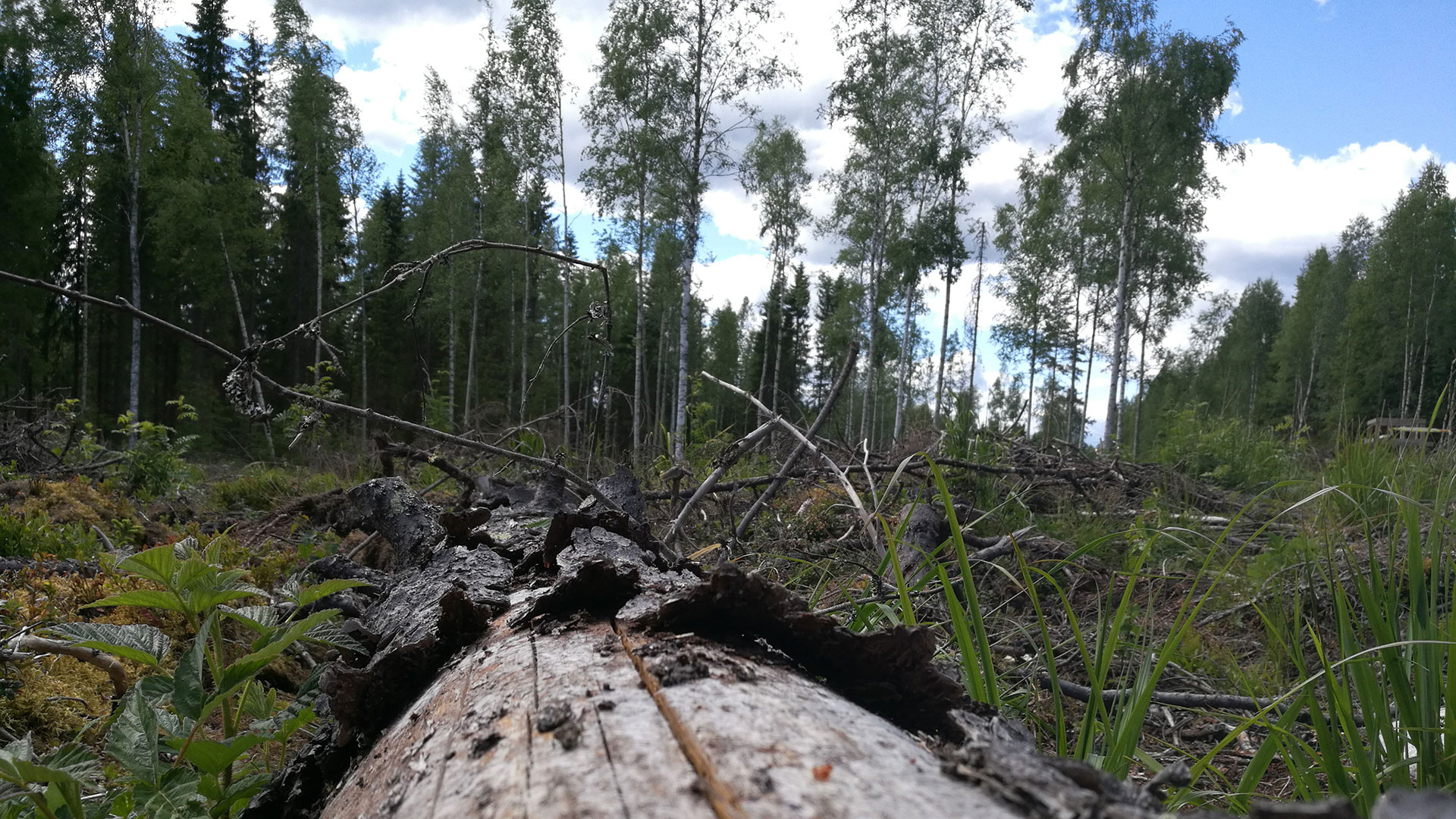UPM is committed to maintaining and improving biodiversity (net positive impact) in its own forests while efficiently producing high quality wood raw material. The indicators used to measure biodiversity are based on a comparison between natural and commercial forests. Studies have shown that one clear difference between these two types of forests is the amount of decaying wood.
More than a fifth of Finland's forest species depend on decaying wood at some point in their lives. Most of the species that depend on decaying wood are fungi and insects. Different species are best adapted to live on a particular type of decaying wood, and the species that live on a single tree are influenced by the tree species, the size of the tree, the position of the decaying wood and the stage of decay.

As part of its objective to improve biodiversity, UPM has decided to investigate the effects of natural nature management measures in commercial forests, such as leaving retention and decaying trees in (or dead wood) regeneration fellings, on the structural features and species of forests that are important for biodiversity.
The study started in autumn 2021 in co-operation with the Natural Resources Institute of Finland (Luke). In the first phase, between 2021 and 2022, 30-50 regeneration areas harvested between 2000 and 2018 in Southern Finland will be inventoried. In addition to species and structural inventories, the aim of the survey is to create a reliable, simple and easily reproducible method for assessing the impact of nature management measures. UPM intends to use the method in its own future measurements.
Objectives of the study:
- To investigate and verify how UPM's conservation of retention and decaying trees in its own forests has affected the amount and species distribution of biodiversity important structural features (large decaying trees, coarse decaying wood).
- To develop a list of indicator species based on three species groups (polypores, decaying wood inhabiting beetles, epiphytes) to assess and monitor the impact of nature management on species diversity.
- To develop methods for longer-term species monitoring to estimate the sample size needed to reliably verify a net positive impact (NPI) on, for example, the amount of decaying wood or the number of decaying-wood-dependent species in an average regeneration area.